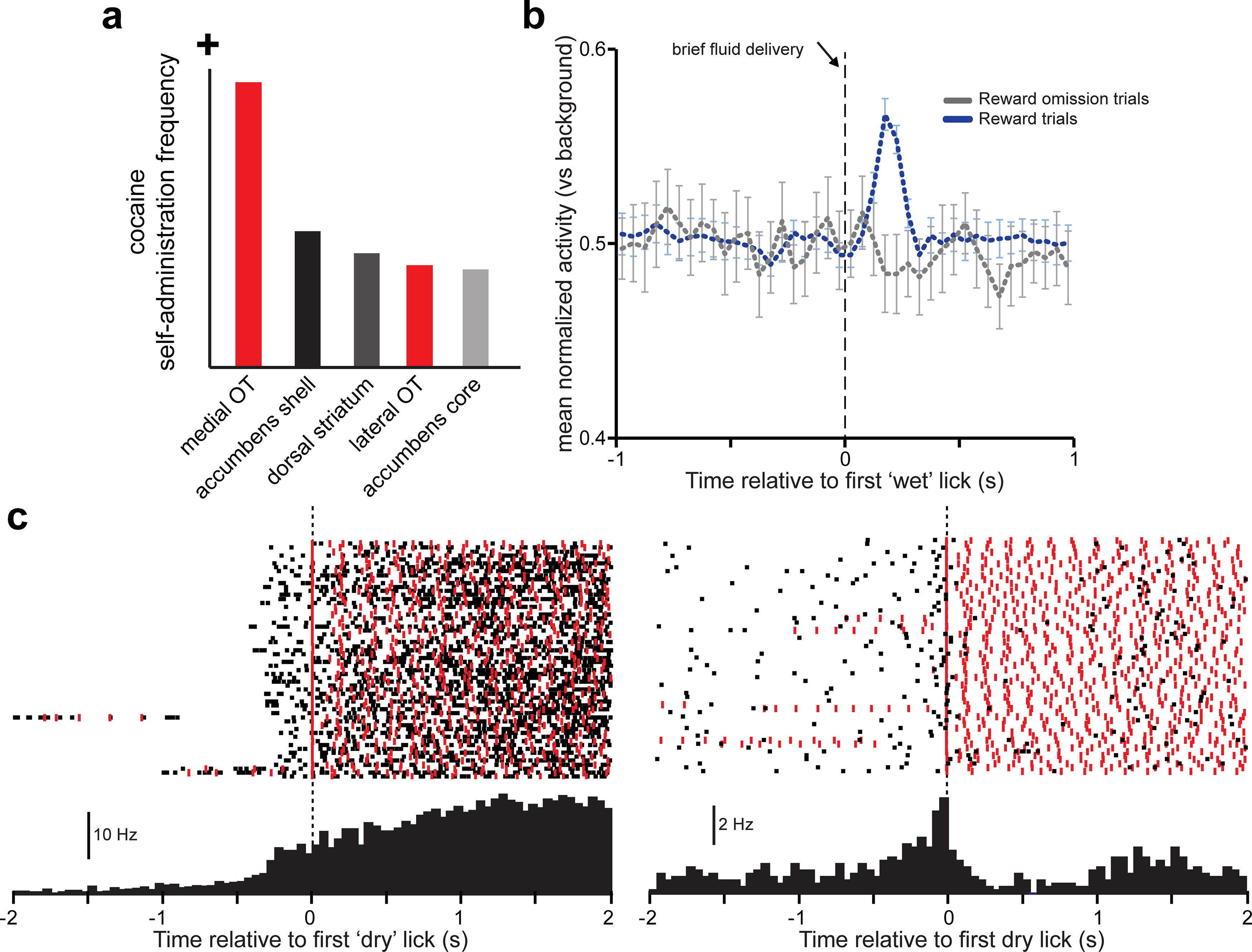Figure 4.

Evidence that the OT supports the reinforcing properties of psychoactive drugs and encodes rewards. a, Summary of results from the work of Ikemoto (2003), indicating the frequency of intracranial cocaine infusions into ventral striatum subregions (red represents OT) when rats were allowed to self-administer 200 mm cocaine. Rats more frequently self-administered cocaine into the medial OT than any other brain region tested. b, Population-averaged firing of OT single units (normalized) during the engagement of mice in a water-motivated task requiring them to lick in succession to obtain a fluid reward. Receipt of reward on the first lick (“wet” lick) evoked a brief bust of firing in the units; this was not observed on trials in which the reward was withheld (omission). c, Example activity of two single units from separate mice (black rasters across trials and peristimulus time histograms averaged across trials) recorded in the same paradigm as in b, but relative to the time the animal initiated the successive licks yet received no reinforcer (“dry” lick). Red ticks represent timing of licks. Both example units increased firing before the onset of the instrumental response to obtain the reward; and in the example to the right, the firing was not related to timing of licks. b, c, Adapted with permission from Gadziola and Wesson (2016).
